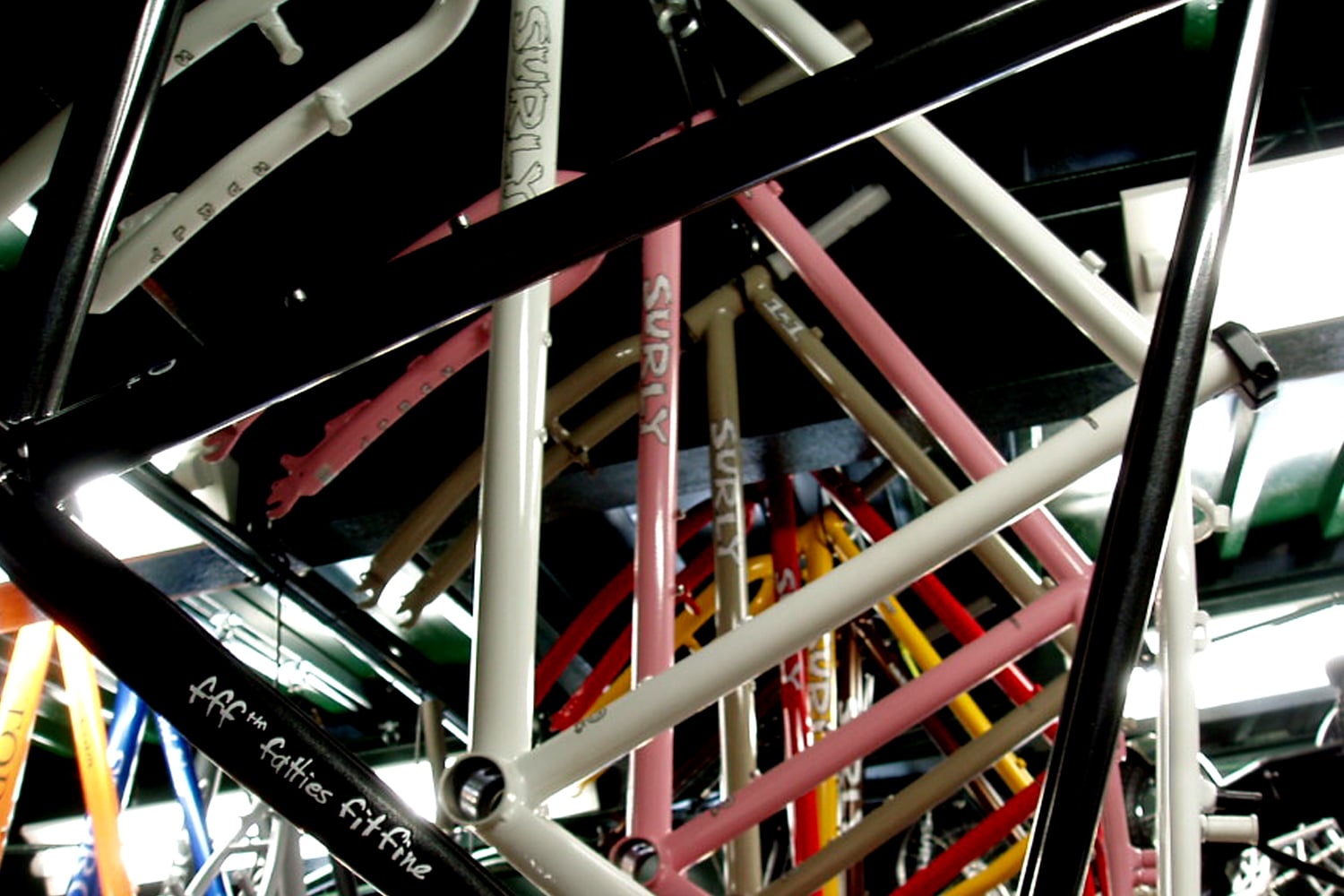O.k., you've been riding this bike for a few days. Maybe you bought it new, maybe it's used, maybe you stole it from your brother. But you notice over the course of a few rides that the seat post tends to creep down. "What the %$#&!?" you say to yourself and maybe a bunch of other folks as you begin to get a little hot under the hood. "Why is this thing slipping?!" Why do seat posts slip?
The fundamentals:
A post that fits a frame well slides smoothly into the seat tube of the frame without any lateral play (side to side movement). This means that the seat post outer diameter needs to be very close to the inner diameter of the frame's seat tube. The seat tube of the frame has a short slot cut lengthwise at the top of the tube. The seat post clamp goes around the top of the tube. When the clamp bolt is tightened, the frame material flexes slightly (the slot allows this flex to occur) and tightens against the seat post. This, of course, is what holds your post in place. If the clamp can't tighten enough for some reason, your post will slip under load.
Expanding on the basics:
Manufacturer specifications for any component, be it a seat tube diameter, seat post diameter, or what have you, allow a small margin of error. This means that the seat tube of even a new frame may have an actual inner diameter a bit larger or smaller (we're talking 10ths to 100ths of a millimeter here) than it lists in its specs. Same goes for the post. So if you have a frame that has a seat tube hole slightly larger than spec. (for example: 27.2mm spec, 27.29mm actual) and the seat post is slightly smaller than spec., the post will be likely to slip. Assuming both tube and post are within manufacturer margin of variance, this won't be considered a warranty. In fact, some post manufacturers (we're not mentioning any names) actually machine their posts smaller than their printed size to accommodate seat tube variance (printed 27.2mm, actual 27.1mm or thereabouts, for instance). These posts are always more likely to slip, even though the post may be brand new, expensive, and marked at the correct size for your frame. Up to this point we are working under the assumption that everything --post, frame, etc.-- is new. If your frame or post or both are used, this variance may be further amplified by wear and tear. Adjusting post height many times over the years can wear down the frame and post a bit, particularly if you do not clean them both regularly (and who does?). Grit and grime tend to act like sandpaper, especially in such tight places. Again, we're talking about very small amounts of material, but enough to possibly cause some slippage. Or perhaps someone who owned the bike before you Flex-honed the seat tube and it is now a bit larger than it started out. Sometimes a bad post or frame is pretty obvious; in other cases, you may not be able to tell with the naked eye.
Secondary causes of slippage: Other, less likely culprits behind post slip include extreme over-greasing of the post, particularly using a Teflon lube on the post, heavy rider weight, and exceptionally rough trails. These are secondary causes, however, which only exacerbate the primary causes and should not alone cause slippage. None of these reasons, however, whether primary or secondary causes, are the most common problem.
All that aside, however: The most common reason for post slip we have come across is the use of the wrong type of seat post clamp for your size and type of riding. A cute little clamp that tightens with a 4mm Allen key may work o.k. on your road bike, but it won't cut the mustard on your mountain bike. For heavy riders, rough trails, and most other things that continue to cause your post to slip, you need a beefier clamp. We make a model called the Constrictor, which has a large frame contact area and uses an enormous 8mm bolt (tightened with a 6mm Allen key) so you can apply plenty of torque, plus it has lots of thread to draw against. The Constrictor was designed specifically to address the issue of post slip, but even when using a beefy clamp there are some things to know to ensure it will work.
How to install a seatpost: First off, you want to grease the post and seat tube inner surface. Just a thin film to help things slide. You don't need a light, but enough to inhibit corrosion and promote easy insertion and removal of the post. Next, apply a light film of grease to the inside of the clamp (the part in contact with the frame) and the clamp bolt threads. You're putting a lot of pressure on that bolt and grease helps keep everything from binding, allowing the clamp to tighten to its full potential. Although most of the time you can use just about any grease, certain situations may call for a specific grease. The bolt on our stainless steel post clamp will work best if you use an all-teflon grease on the bolt threads. Finally, torque the bolt to manufacturer specification. If you're using a clamp too wimpy for your application, you'll break the clamp bolt or round out the flats before it can tighten enough to keep your post from slipping. And guess what: that's not a warranty. If you're using our Constrictor or another suitably heavy duty clamp, and you're pretty sure your post and frame are compatible, and your post is still slipping, then you have what we call a situation, cowboy, and you need to consult your local bicycle mechanic.
 Surly Bikes
Surly Bikes